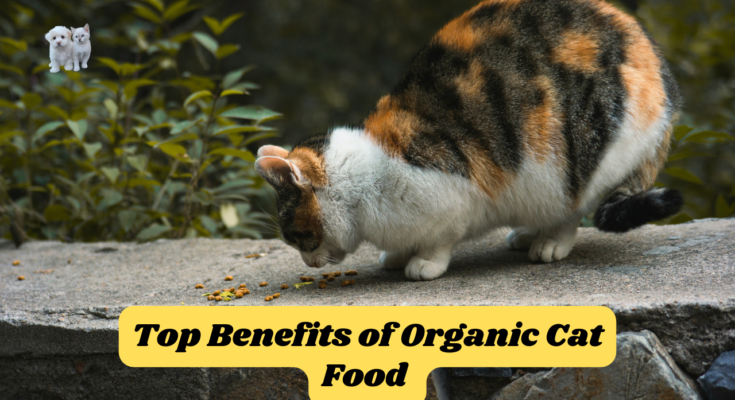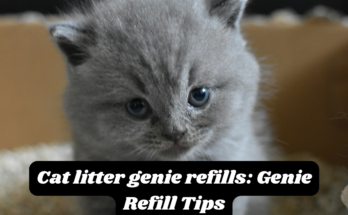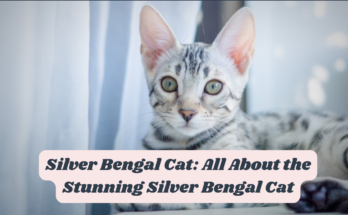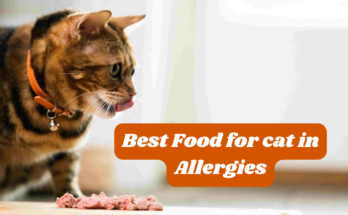Organic Cat Food is a tremendously common term that most pet parents have most likely heard at one point or another. This term typically refers to items found in the vegetable, fruit, or meat aisle.
The whole thing organic foods, whether they are human foods or pet foods, necessary meet the equivalent criteria for the USDA National Organic Program.
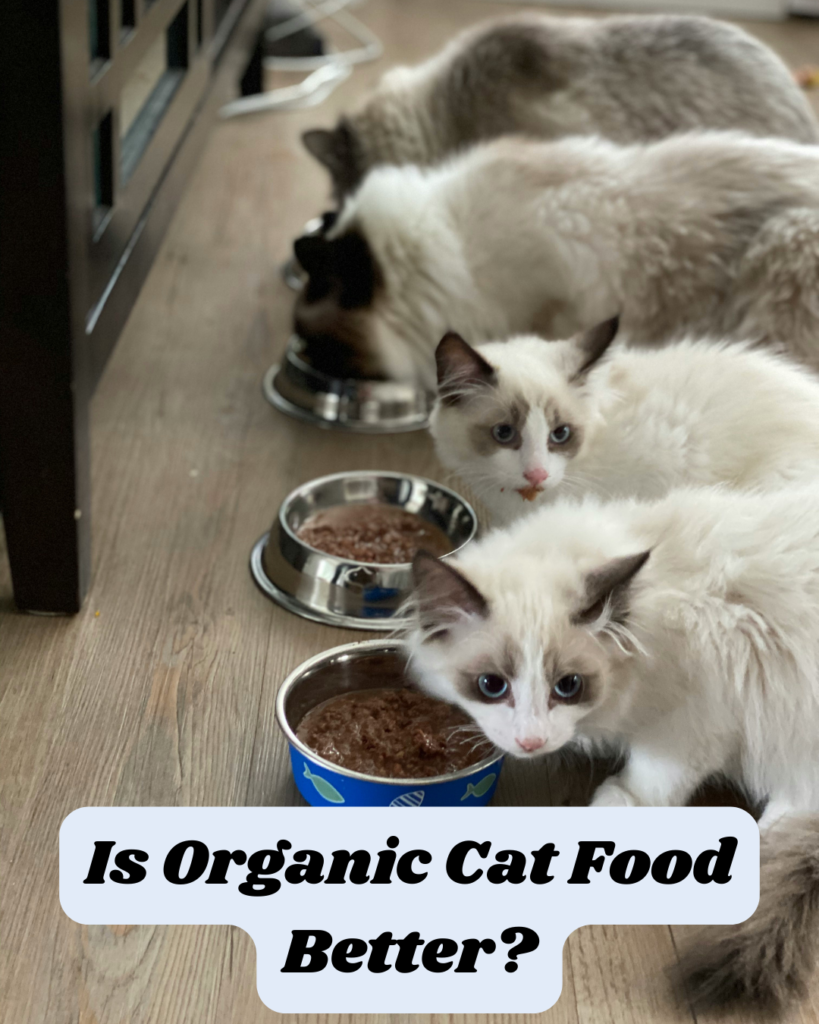
Labeling pet food “organic,” pet food must not have antibiotics, artificial hormones, toxic pesticides, or preservatives. Ingredients in organic cat food must not be heritably engineered, or grown in chemical fertilizer.
In general “organic,” food essentials are free of antibiotics, synthetic hormones, noxious pesticides, and stabilizers. The term organic also points toward that the food is produced from healthy, fresh, and nutrient-rich ingredients. When choosing organic cat food brands, it’s important to look for those that prioritize high-quality, natural ingredients without artificial additives. There should not be any synthetic materials or chemicals present in the organic ingredients.
Types of Organic Cat Food:
- 100% organic: all the components are organic, and do not comprise genetically improved organisms (GMOs).
- Organic: the components are 95% certified organic and comprise no GMOs.
- Made with organic: a minimum of 70% of the components are organic, specified clearly, and comprises no GMOs
- Organic ingredients: the produce cannot be labeled organic since no specific percentage of the ingredients are certified as organic, and may well have GMOs.
Organic grain-free cat food:
Grain-free cat food comprehends similar components as regular cat food but minus the grains. Organic grain-free cat food is spontaneously certified and does not contain wheat, corn, or rice. These grains are often replaced with potatoes, sweet potatoes, or lentils. Although it’s rare, a kitty can be allergic to grains. Possible symptoms of allergies include inflamed or itchy skin, excessive hair loss, scabs, and sores. An exclusion test can be done with the veterinarian to regulate the source of the allergy.
Understanding the USDA Standards for Organic Food:
In anticipation of the Association of American Feed Control Officials (AAFCO) progressing its necessities for organic pet food and treats, this organization failed to pay to the United States Department of Agriculture’s (USDA) National Organic Program (NOP) standards.
What are the current USDA standards for organic food? While you can find the full list on the USDA website, the general requirements for organic food/ingredients are that they must not:
- Use antibiotics or hormones.
- Usage of genetically modified seeds.
- Usage of proscribed fertilizers or pesticides.
“Organic” vs. “Made With Organic Ingredients”:
Products labeled “made with organic ingredients” may contain only a few organic components along with some non-organic ingredients. Certified organic treats comprise completely organic ingredients and processing that keep to the USDA’s standards.
What Makes A Cat Food Organic?
The term “organic” is extensively used when it comes to pet food. As officially defined by the Association of American Feed Control Officers (AAFCO), organic animal feed obligations meet the production and handling necessities of the USDA National Organic Program (NOP).
The NOP is a federal regulatory program that establishes and implements consistent national standards for organically produced agricultural products sold in the United States. The NOP certifies that farms and businesses meet national organic standards, while the USDA enforces these standards through audits, investigations, and other activities. According to the NOP website, “organic” products are “produced through approaches that integrate cultural, biological, and mechanical practices that foster cycling of resources, promote ecological balance, and preserve biodiversity.” The USDA’s National List of Allowed and Prohibited Substances specifies the synthetic substances that may be used and the non-synthetic (natural) substances that cannot be used in organic crop and livestock production.
Since organic regulations for pet foods are at present being developed, the NOP states that pet foods claiming to be organic essential meet the human food code of practice.
Contrast in Organic and Natural Cat Foods
Organic cat foods obligation follow the same rules recognized by the USDA for organic human food constructors:
The crops are mature without the procedure of fertilizers or herbicides.
Animals raised for meat, milk, or eggs are provided with feed that is grown organically.
Companies that are accredited by the USDA examine the operations of the farmers and food companies.
Natural cat food is defined by AAFCO as:
“…a feed or feed ingredient derived solely from plant, animal, or mined sources in final form, but having been produced by or subject to chemically synthetic process and not containing chemically synthetic additives or processing aids, except in quantities that may result from good manufacturing practices”
For a cat food to be labeled as “natural,” ALL of the constituents must meet the AAFCO definition. The term “natural” cannot be used if artificial preservatives, flavors, or colors are present. However, exceptions include chemically synthesized vitamins, minerals, or trace nutrients that may be necessary to ensure the diet is complete and balanced. There necessary be clarify that the food is “natural with supplementary vitamins and minerals.”
Is Organic Cat Food Better?
Tufts Veterinary Nutritionist Cailin Heinze states, “Ultimately, there is minimal evidence demonstrating the nutritional advantages of organic foods for humans.” This likely applies even more for pets, as pet food is designed to be ‘complete and balanced,’ provided that indispensable nutrients at levels that come across or exceed recommended amounts.”
It’s optional to look for the “basic four” on a cat food label:
- Protein (animal sourced)
- Fat (such as fish oil)
- Fiber (such as gums, beet pulp)
- Water
Several states have regulations necessitating the minimum amounts of nutrients that a cat food necessity comprises, along with the maximum amount of moisture and crude fiber.
Pros of organic cat food:
Organic cat food can significantly have a positive impact on a cat’s overall health and well-being. Here are some ways it can benefit cats:
- High-quality ingredients: Organic or natural cat foods often comprise high-quality ingredients that are negligibly processed and free from artificial additives, preservatives, and fillers. They are made with real meat, vegetables, and grains providing essential nutrients for cats.
- Digestive health: Cats can be sensitive to certain ingredients, and commercial cat foods might contain fillers or artificial additives that can contribute to digestive issues. Organic or natural cat foods are usually made with easily digestible ingredients, reducing the risk of digestive problems and promoting better nutrient absorption.
- Allergies and sensitivities: Cats can progress allergies or sensitivities to certain ingredients, such as artificial colors, flavors, or common allergens like grains or poultry. Organic or natural cat foods often circumvent these ingredients, providing an ideal choice for cats with allergies or sensitivities.
- Overall health support: Organic or natural cat foods are regularly fortified with indispensable vitamins, minerals, and antioxidants that support overall health and immune function. These nutrients can underwrite a cat’s energy levels, coat health, joint health, and a strong immune system.
- Weight management: Particular organic or natural cat foods suggest specialized formulas for weight management. These foods are every so often lower in calories and higher in fiber; serving cats to maintain a healthy weight and decrease the risk of obesity-related health concerns.
- Greater than before water content: Certain organic or natural cat foods may have higher water content than conservative dry foods. This can assistance encourages proper hydration in cats, as they often have low thirst drives and possibly will not drink sufficient water on their own.
- Environmental impact: Best Organic cat foods possibly will be produced using sustainable and eco-friendly practices. This can include employing organic farming methods, sourcing ingredients responsibly, and reducing the use of harmful chemicals and pesticides.
Organic Foods are Delicious at Times:
Even though several claims that organic and non-organic foods taste not quite the same, particular food products can differ in their flavor profile. Fruits and vegetables that are cultivated organically benefit from the usage of environment-friendly fertilizers. They also necessity lower water content, leading to organic fruits and vegetables having a filled flavor profile than conventional products.
More Antioxidants:
According to studies published in the British Journal of Nutrition, organically grown foodstuffs contain 20 to 40% more antioxidants than their predictable counterparts. That points to the circumstance that organic food makes available more nutrition, vitamins, and minerals than other foods.
Higher Levels of Salicylic Acid:
Organic foods also have a high content of salicylic acid. Salicylic acid assistances hang onto arteries hardening due to the influence of dissimilar kinds of heart diseases. Given the tremendous benefits, a higher level of salicylic acid in organic produce is good for the body.
Cons of Organic Cat Food:
Higher Cost:
Multiple reports comparing the cost of 100 organic foods and their non-organic traditional counterparts show that organic foods cost almost 45-50% more. While several products like olive oil, cream cheese, carrots, and honey cost similar or less than their traditional counterparts, the break cost is way higher.
Not Easily Accessible Everywhere:
Natural organic cat food is not easily accessible. The demand for organic produce is accumulative rapidly across the globe, particularly among millennials. However, not all places have relaxed access to organic produce. With furthermost organic agricultural sites in Asia, and South and Latin America, transporting the organic produce becomes a challenge as they have a smaller shelf life and don’t travel well. In arrears to these limitations, organic food supply is scarce in many parts of the globe.
Requires Supplementary Physical Labour:
Organic foods take much more physical labor both on the fields and in the pens and animal crop growing. It is due to the concentration of organic produce taking place in natural growing methods, which involve very a small number of mechanical processes leading it to be physically labor-intensive. For example, spraying natural fertilizer, soil tilling, and hand weeding is extremely labor-intensive and take months longer than their conventional counterparts.

